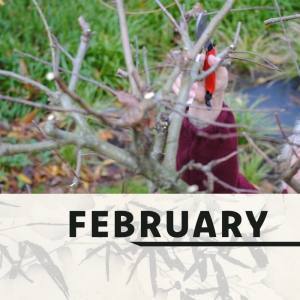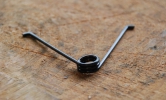
The days are lengthening and Spring is slowly coming into view. Before you know it, snowdrops and crocuses are coming up again! Stay alert though, it can still freeze this month so keep a close eye on frost sensitive plants.
Garden
- Deciduous and evergreen shrubs and trees may still be planted or transplanted, as long as it doesn’t freeze
- If the snow and ice is gone, you do not need to feed the birds anymore. However, you can hang up a few birdhouses where the birds can start building their nests.
- Apply compost around all plants and carefully work through the top layer of soil to protect against the frost. Do not forget to remove all weeds between plants after the last frost.
- Don’t forget about your potted plants in the barn! Give them a bit of water every now and then.
Pruning
- Deciduous shrubs and some trees may be pruned in February. However, do your research as trees prone to bleeding, such as nut trees, maple, birch, etc., should only be pruned during high summer when the trunks are dry.
- Pay extra attention this month to the Hydrangea, this graceful plant is best pruned early in the Spring, but after any chance of frost. The Hortensia flowers on wood that was grown during the previous year. Leave the annual branches, so the plant can continue to rejuvenate. About 1/5 of het trunk may be pruned completely, preferably the oldest branches. You can keep about 5 cm above the ground as a pruning height. Ensure a regular distribution between the remaining branches, keep looking carefully at the entire shape and cut back the remaining branches to a maximum of 1/3. As always, the golden rule remains, use only high quality, sharp, and clean pruning tools!
Did you know that the blue Hydrangea grows in acidic soil? This is soil without much lime. If you would like to keep the vivid blue color and the soil is not naturally acidic, work some peat through the top layer. Give the blue Hydrangea rainwater in the summer months instead of tap water with calcium carbonate in it.
Lawn
- A lot of rain can fall in February. If puddles of water remain on the lawn, it is necessary to poke a number of holes in the soil with a prong so the excess water can sink away.
- You can sprinkles some lime on the lawn in February, as lime takes a long time to work. Lime ensures the soil does not acidify and works well against moss.



